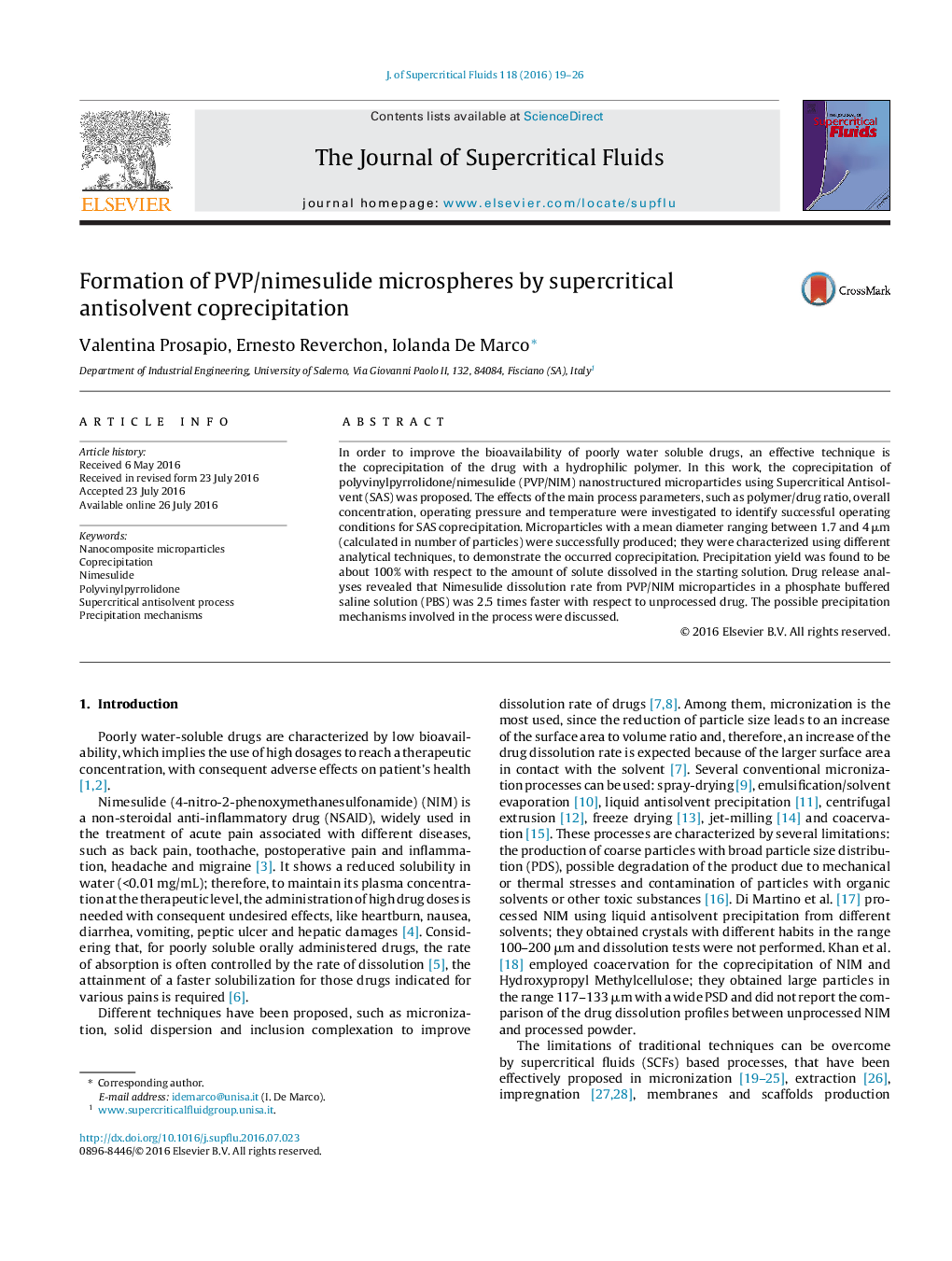| Article ID | Journal | Published Year | Pages | File Type |
|---|---|---|---|---|
| 343515 | The Journal of Supercritical Fluids | 2016 | 8 Pages |
•Coprecipitation of spherical microparticles of PVP and nimesulide was obtained using SAS process.•Particles mean diameter ranged between about 1.7 and 4 μm.•Crystallinity, drug effective encapsulation, drug release profiles and residual solvent were determined.•Nimesulide dissolution rate was enhanced in the coprecipitated particles.
In order to improve the bioavailability of poorly water soluble drugs, an effective technique is the coprecipitation of the drug with a hydrophilic polymer. In this work, the coprecipitation of polyvinylpyrrolidone/nimesulide (PVP/NIM) nanostructured microparticles using Supercritical Antisolvent (SAS) was proposed. The effects of the main process parameters, such as polymer/drug ratio, overall concentration, operating pressure and temperature were investigated to identify successful operating conditions for SAS coprecipitation. Microparticles with a mean diameter ranging between 1.7 and 4 μm (calculated in number of particles) were successfully produced; they were characterized using different analytical techniques, to demonstrate the occurred coprecipitation. Precipitation yield was found to be about 100% with respect to the amount of solute dissolved in the starting solution. Drug release analyses revealed that Nimesulide dissolution rate from PVP/NIM microparticles in a phosphate buffered saline solution (PBS) was 2.5 times faster with respect to unprocessed drug. The possible precipitation mechanisms involved in the process were discussed.
Graphical abstractFigure optionsDownload full-size imageDownload as PowerPoint slide
